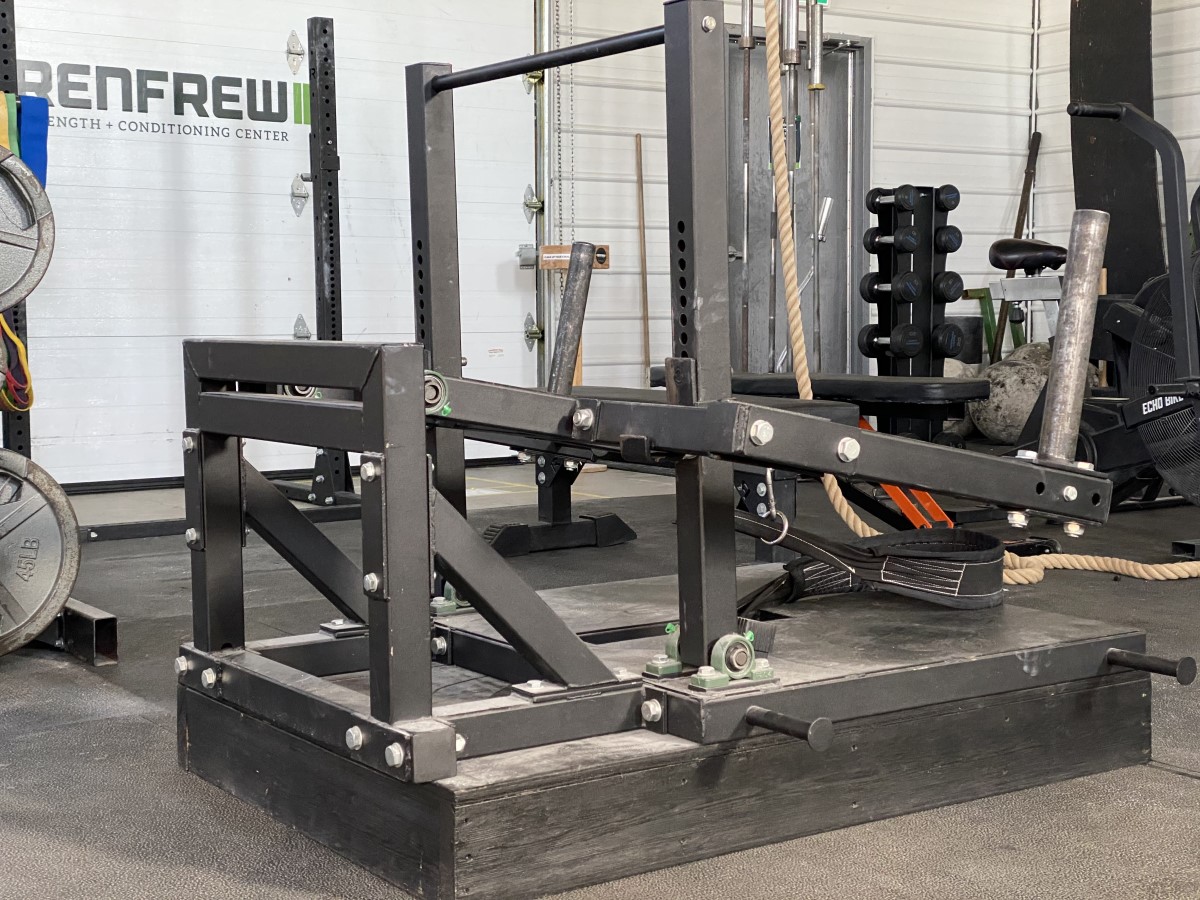
Table of Contents
Introduction
If you’ve been powerlifting for a while, you’ve likely tried the precarious makeshift belt squat by standing on two boxes and letting a weight dangle from a belt between your legs. While this movement works in a pinch, gaining access to a belt squat machine is a nice change.
Bells of Steel has risen to fame since its launch in 2010, making high-quality gym equipment at an accessible price. For lifters in Canada who often face the challenges of the US exchange rates paired with astronomical shipping charges, it’s nice to have a reliable equipment manufacturer north of the border.
[Editor’s Note: Bells of Steel started originally with the Canadian site at bellsofsteel.com and since added the US-facing site at bellsofsteel.us that ships from Indiana]
At Renfrew Strength and Conditioning Centre, we’ve had this machine for two years. Many of our body builders use it for targeted lower body movements (like calf raises) while our powerlifters like to throw on bands and push the limits of their strength. I’ve relied on the belt squat while battling a shoulder injury that limited my upper body range of motion and prevented me from getting into the back rack position with a barbell. In other words, this is a versatile machine.
Here’s a full review of the Bells of Steel belt squat machine, the benefits of belt squats, and a few key considerations to keep in mind.
Specs and Makeup
As the brand name implies, the Bells of Steel belt squat machine is built from heavy-duty steel. This feature makes it a pain to set up and move around, but a worthwhile investment that you know will stand the test of time. Weighing in at 264lbs with a capacity of 700lbs, there’s no worry that forgoing a barbell means forgoing big gains.
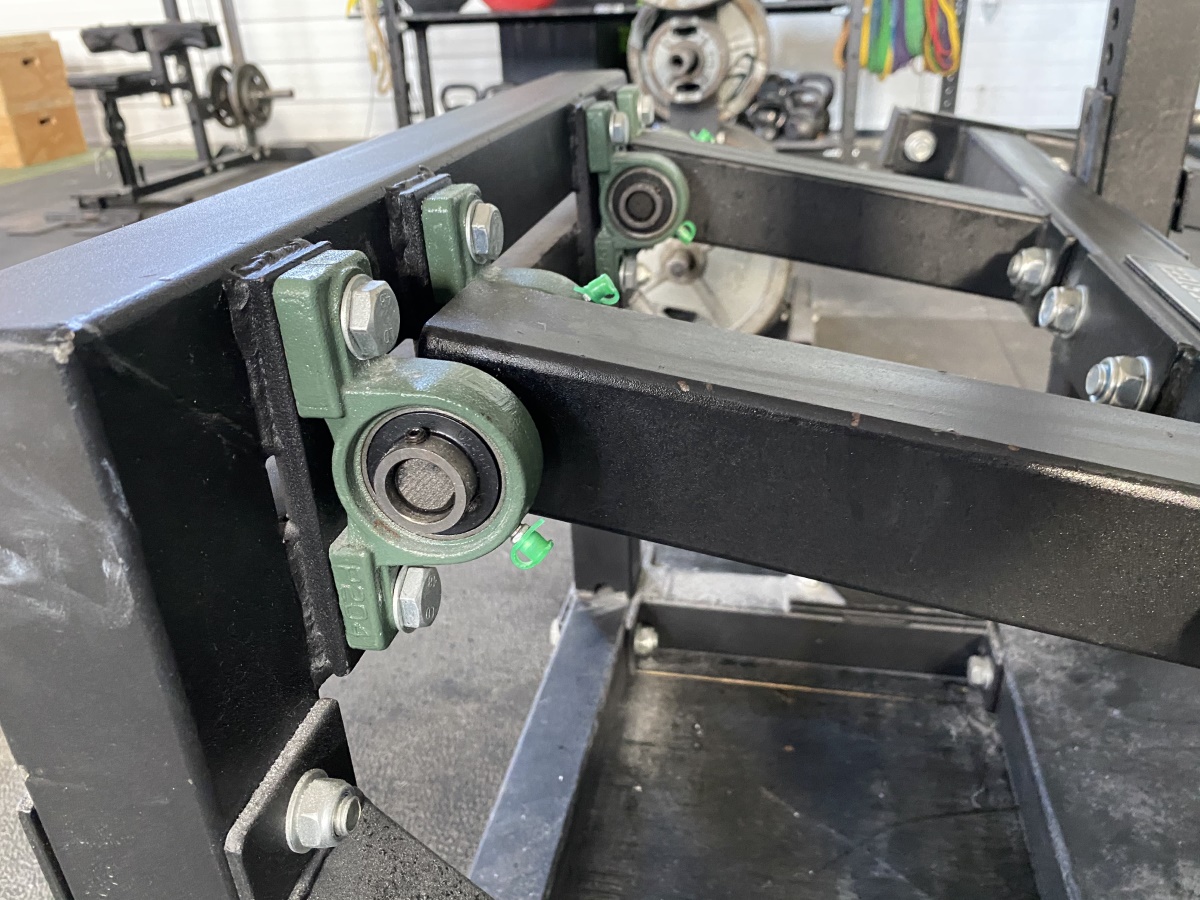
This belt squat machine uses bushings rather than bolts at the pivot points, making the movement smooth and secure. This feature contributes to the longevity of the machine as well, as less rattling means less degradation over time.
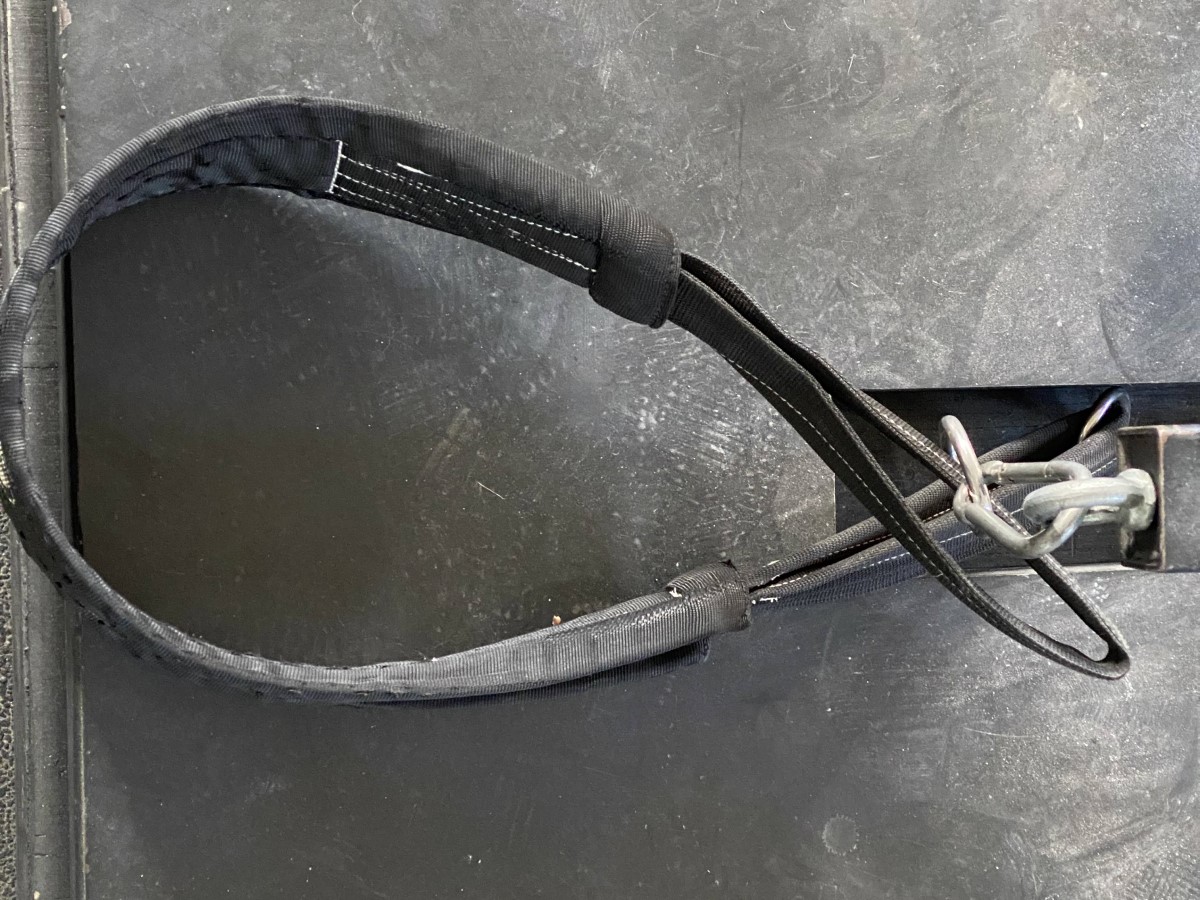
The heavy-duty belt is durable and well-padded for a comfortable fit for athletes of all sizes. The machine comes with chains and carabiners to adhere to the belt, allowing for adaptation as needed.
The Bells of Steel belt squat machine comes in either a top-loading format or side-loading format. The machine featured here is a top-loading belt squat. We’ll get into the differences later.
One of the key features that make the Bells of Steel belt squat machine such a great addition to a powerlifting or strongman gym is the band pegs along the bottom. These make it easy to add bands to challenge sticking points and build a stronger posterior chain.
The top-loading version of this machine is approximately 4’x4′ and doesn’t require mounting, making it ideal for both commercial and garage gyms. The Bells of Steel belt squat machine comes in two boxes, requiring assembly. While the process is tedious and awkward, the customer service is fantastic.
Durability
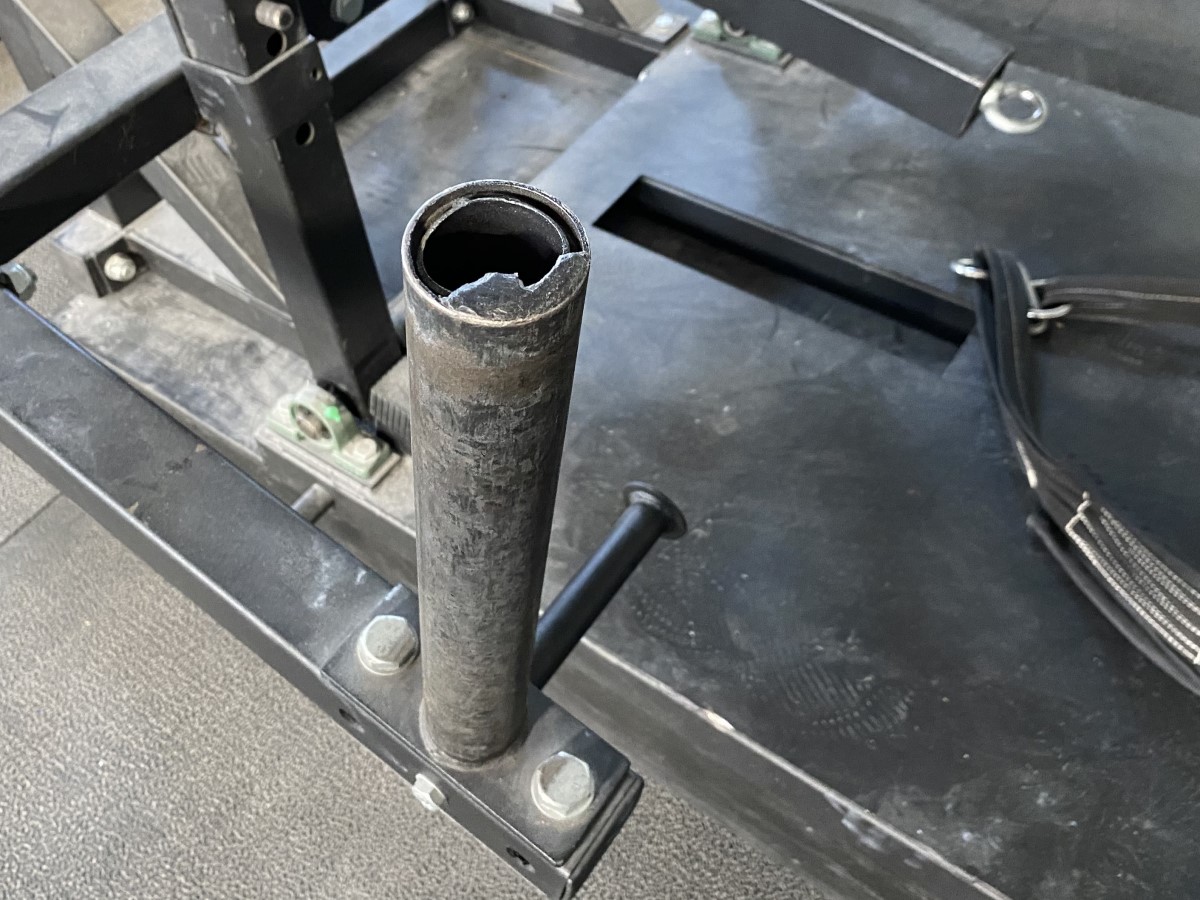
This particular machine has been in use for two years with minimal signs of wear and tear. The only apparent damage is one of the caps on the plate loader, which likely occurred when it was moved on and off a truck for an in-house meet. As mentioned before, the heftiness and awkwardness of this machine make it a nightmare to transport. Still, it’s worth noting that the only damage occurred during mishandling (though the guys tried their best).
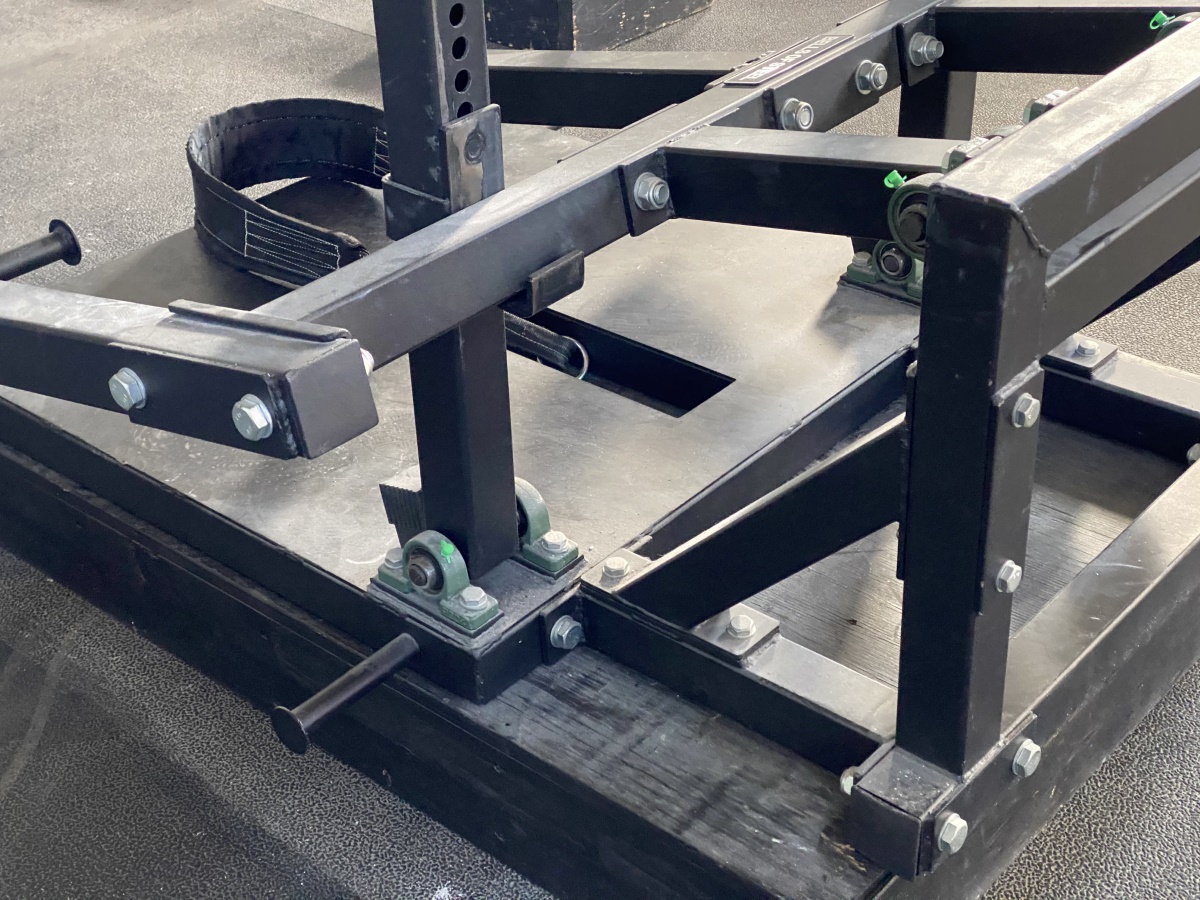
The black powder coating has held up remarkably well over two years of heavy use. There is some breakdown at friction points (the J-hooks, in particular), but most of the machine still looks brand new. There’s been no breakdown at the pivot points, speaking to the durability of this machine.
Ease of Use
While the belt machine looks intimidating, this particular machine has a user-friendly design. Lifters can adjust the height using the J-hooks, step into the machine, put on the belt, lift the safety bar out of the way, and start moving.
There are two minor flaws to the design that will impact some athletes while leaving others unaffected. The first is the carabiner positioning. Taller athletes may have to take a knee to get out once the safety bar is back in place. This could be avoided with chains.
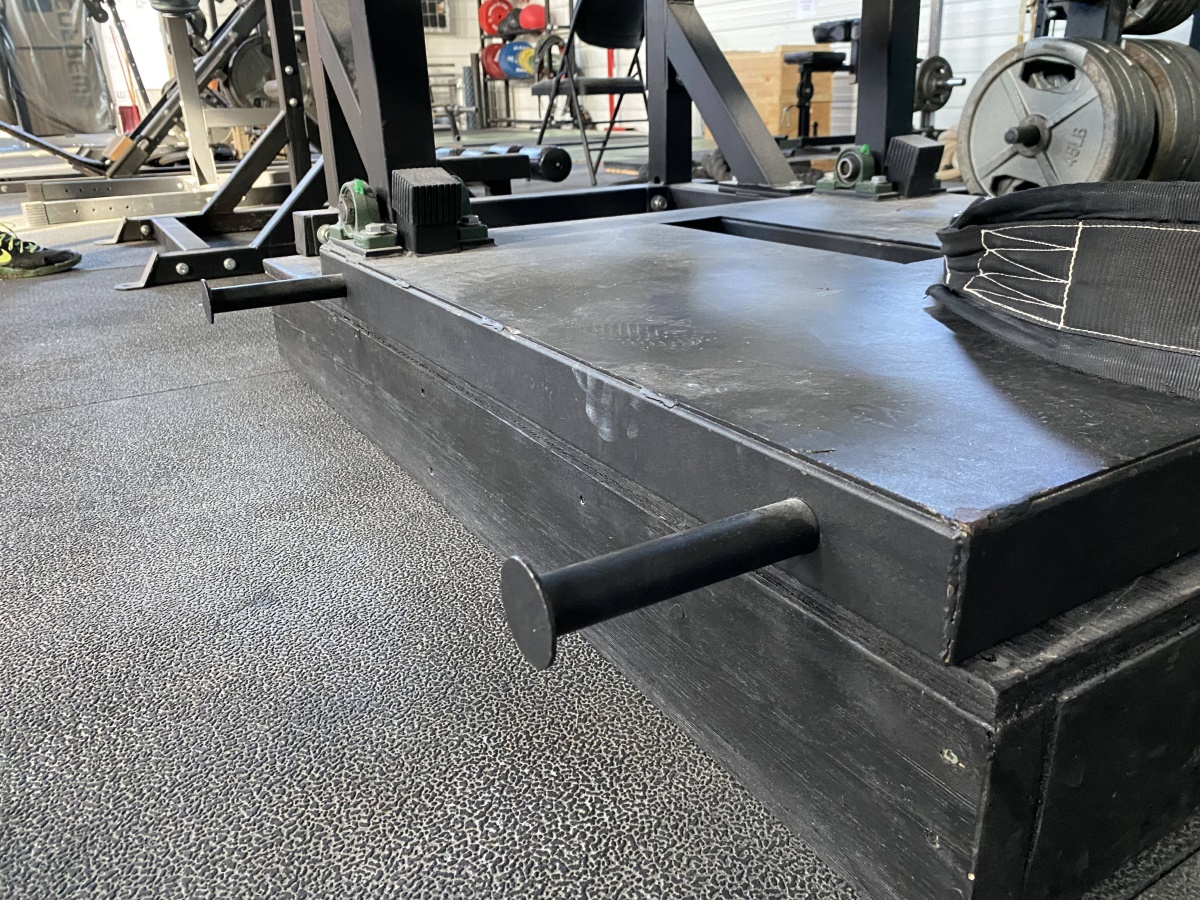
The biggest flaw is the range of movement for smaller lifters like yours truly. Even with the top-loading feature, the machine will bottom out on deep squats. It was a common enough occurrence at Renfrew that we ended up putting the machine on a 6″ elevated box, which fixed the problem.
Loading and unloading the machine is also cumbersome, especially when dealing with metal plates. All-in-all though, the learning curve is minimal.
Adjustability and Ergonomics
As mentioned previously, the adjustability of the Bells of Steel makes it ideal for all athletes. The belt is designed to evenly distribute the weight along the hips and can be adapted for different body types.
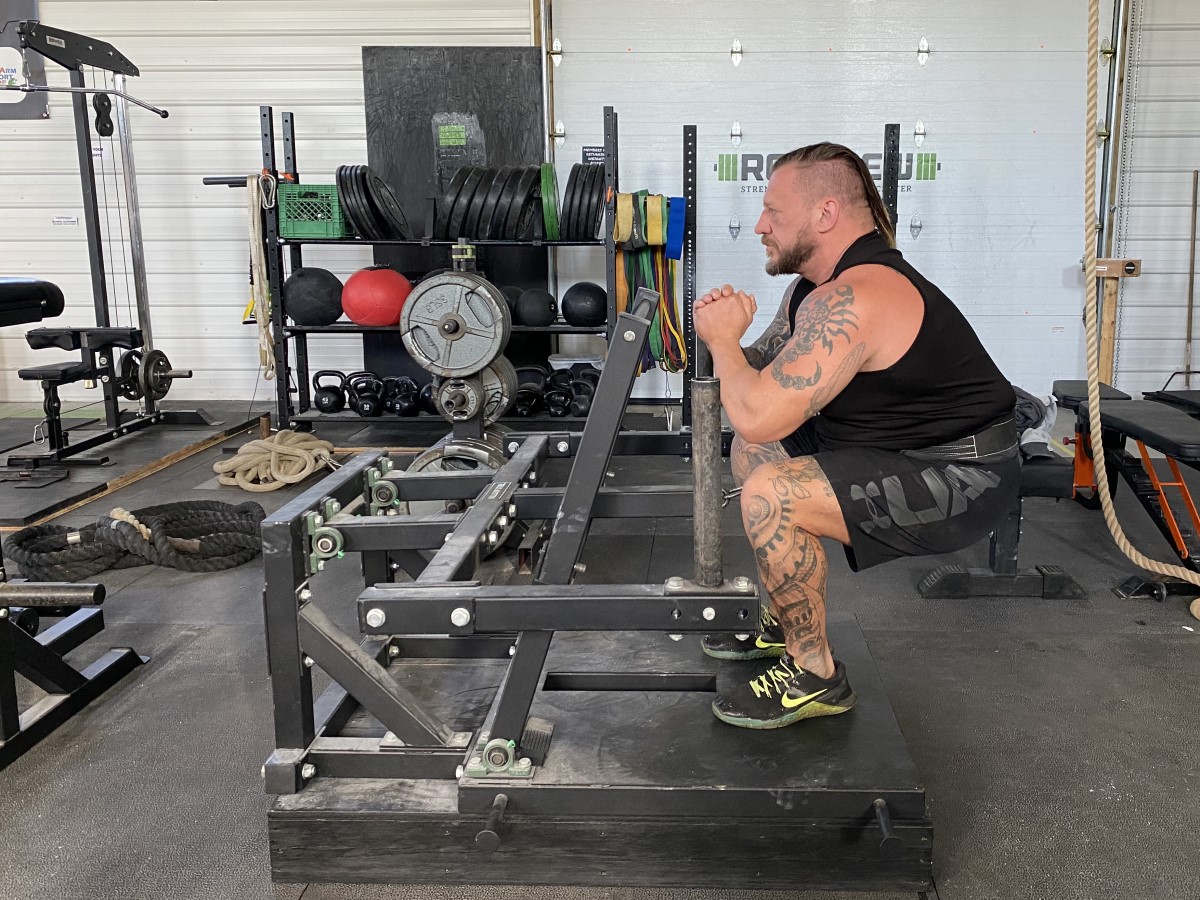
The key thing to remember when using a belt squat machine is your body position in relation to the weight. If you feel tension on your back or pain, try repositioning the belt, so it’s lower along your hips or adjusting your stance. While your lumbar spine isn’t loaded when using a belt squat, practicing good form and avoiding unnatural extension is a must for getting the most out of this machine.
Top-Loading vs. Side-Loading Plate Pegs
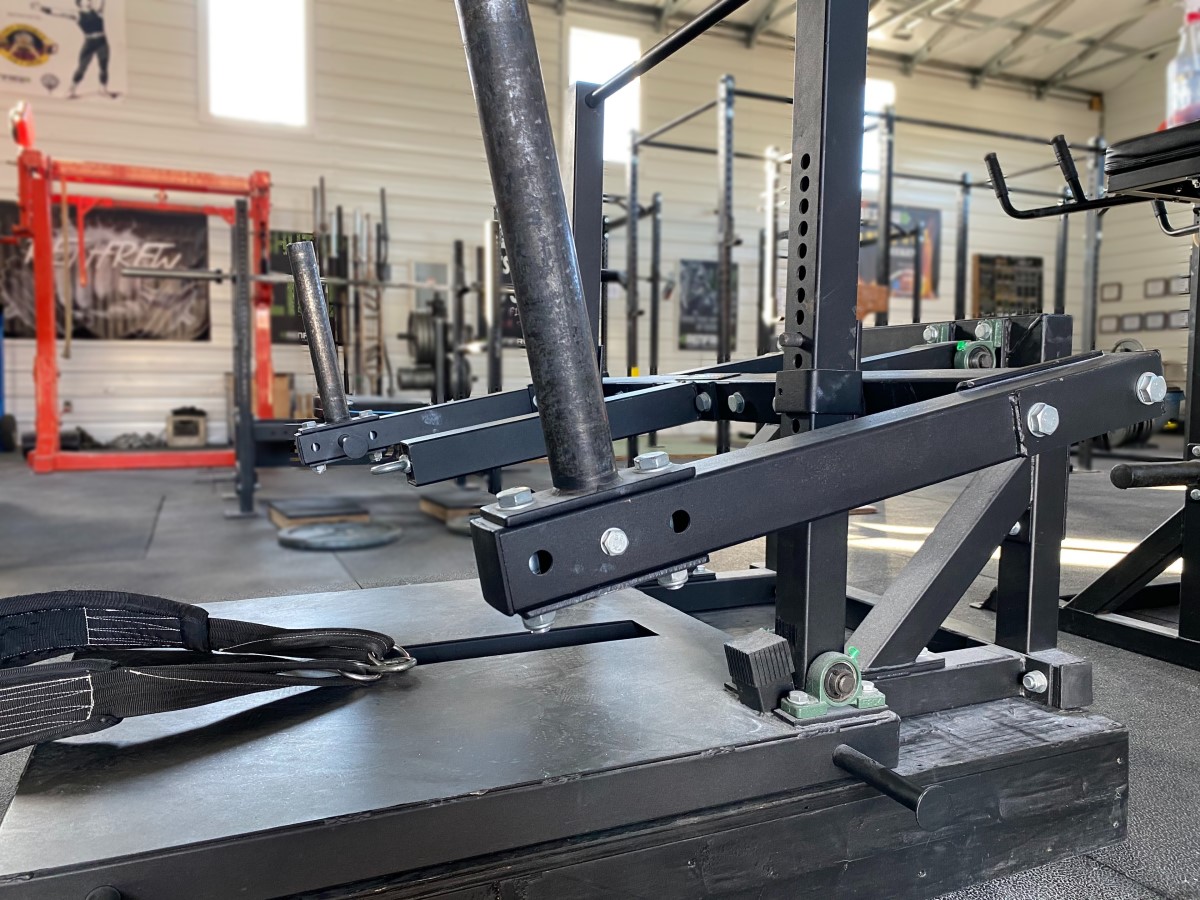
When choosing a belt squat machine, you’ll have to determine whether you want a top-loading or side-loading mechanism. Fortunately, Bells of Steel offers both.
The primary benefit of the top-loading machine, and the reason we went with it at Renfrew Strength, is the extended range of motion. The side-loading belt squat will bottom out far before the top-loading belt squat. If you’re in it for the deep squats, you’ll want a top-loading machine.
The main benefit of a side-loading belt squat machine is the increased ease of use. Loading and unloading the plates on the machine is easier, with fewer pinched fingers and less wrestling to pull plates upward. If your main goal is bodybuilding and muscle isolation, and getting deep and low isn’t a concern, side-loading belt squats are more convenient.
Belt Squat vs. Barbell Squat
One of the primary reasons for using a belt squat over a barbell squat is the health of one’s posterior chain if they have an injury. Using a belt squat can help you get an intense lower body strength workout without bringing your upper body into the equation. This is a great option for those with mobility issues or shoulder injuries. I personally used it a lot after spraining my shoulder, as I couldn’t get into a back rack position.
The belt squat machine is also an excellent standalone machine that offers targeted lower body training and plenty of variability. Many bodybuilders love the belt squat machine for targeting the calves and quads, using more isolation than offered by the compound nature of a barbell squat. While this is a benefit to some, it’s also a downside of using the belt squat as a barbell back squat alternative.
As the belt squat doesn’t require the same level of upper body stability, it offers less core and glute activation. However, studies have shown that the hamstring, quad, and plantar flexor activation are primarily unchanged.
While alternating barbell squats with a belt squat will help protect your back (if that’s a concern) and continue to build lower body strength, they’re not a replacement for barbell squats. If you think you can push the weight with a belt squat then hop under a barbell and hit the same numbers, it’s not going to happen. That core strength and those stabilizer muscles are integral for aspiring powerlifters. If you’re thinking of belt squatting because your barbell squat form is terrible, it’s always better to drop the weights and improve the quality of movement.
There’s also a safety component to mention for those working out alone in light of the global pandemic. If you don’t have a spotter and you want to hit some heavy weights, a belt squat is a nice alternative. The versatility of this piece of equipment also makes it a high-value addition to a home gym with minimal space.
There are also a variety of movements, like belt squat marches, that aren’t as feasible with a barbell. That’s not to say that belt squats are better than barbell squats, though they offer more variability and accessibility— they’re just different.
Pros and Cons of Lever Belt Squat Systems
The Bells of Steel belt squat machine uses a lever system. You get set up, you pull the safety bar, you start working, the weight goes up and down via the lever. There are also different mechanisms you might see while shopping for a belt squat machine.
The pulley system operates similar to a cable machine, and is mechanically comparable to the lever system. The problem with both of these machines, and another feature that sets them apart from barbell squats, is the separation from the weight and the center of mass. As such, these machines won’t be the same as having the weight hanging directly beneath you as you stand on two boxes. To compensate for that pull forward, you may have to lean back further than you would with a barbell squat, which isn’t always a natural movement pattern.
You might be able to squat 500lbs on the Bells of Steel machine, but only half that on a pin machine that puts the weight directly under you. The pin machines are meant to be a direct translation of the hip belt squats you’ve tried while standing on boxes and rigging a kettlebell or plate to your belt.
Is the Bells of Steel Belt Squat Worth It?
The quality, durability, and affordability of the Bells of Steel belt squat machine make this purchase worth it. Generally speaking, a belt squat machine is a versatile tool that’s ideal for both commercial and home gyms. This piece of equipment is a safe, effective way to load your lower body and make big gains without agitating and back or upper body injuries.

I purchased the 2.0 version 3 weeks ago when it came back in stock. I have to concur with everything the author said. This is a great alternative for the off season, rehab, or just adding in variety to your routine. It’s also useful for a few other exercises, which is key for the home gym where space is always a concern.
Good to hear about your experience with it! Did you have any issue with the bottom range of motion, that this gym compensated for by building a box under it?
Hi Dave, No, I have not had any issues with the machine bottoming out, but I’m 6′ 1″. I squat a little below parallel and have plenty of travel left. My workout partner is around 5′ 9″ and comes close, but still has room. I have the arms in the top mount configuration which saves space and gives more depth clearance. Solid machine. Honestly much better than I expected.
The only complaint I have is that the band pegs are very close to the ground, and make it difficult to get the thicker bands from Rogue and Elite FTS through. I’ll probably end up throwing a couple of 2×4 pieces under it to solve this. The machine is heavy enough that I have no worries about it moving under load.
I’ve seen quite a few complaints online about the assembly, but I got it done in roughly 2 hours with the help of power tools and this YouTube vid: https://www.youtube.com/watch?v=bTkEzg1wmOw&list=PLYaj5dqbkVIX0ciDQVpYOvI_gC4dxNWTc&index=26 from The Armory.
The squat depth is probably an issue for people around 5’6″ and under.
I see what you mean about the band pegs being badly designed. Those were introduced in v2.0.
2 hours even with the help of power tools, that’s a lot of work!
Would you be able to give me the dimensions of the platform for the belt squat?
The platform itself (not accounting for the band pegs) is 35”x35”, but note the back of the machine takes an additional 16 1/2” of depth if you have it facing a wall.
Thanks Bill, appreciate it!
You’re welcome sir. After having it 5-6 months now, I would definitely purchase it again even though the price went up a little. Very happy with it. Hopefully BoS will run a Black Friday special. If you end up getting one, do yourself a favor and purchase the adjustable belt from Spud. Huge improvement over the belt the machine comes with…
I’m definitely getting one, I’m just waiting to see if there will be anymore black Friday deals coming. I grabbed a Spud belt a few months, which is what started my quest for a bigger and better belt squat.